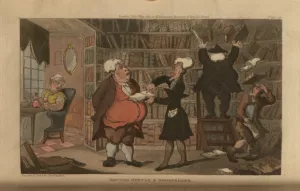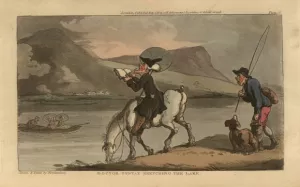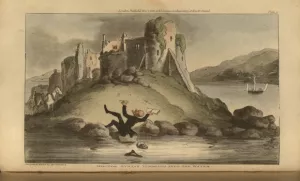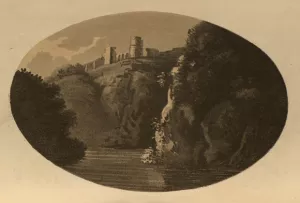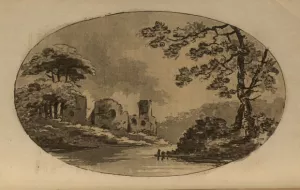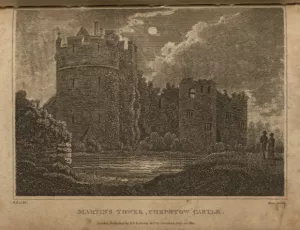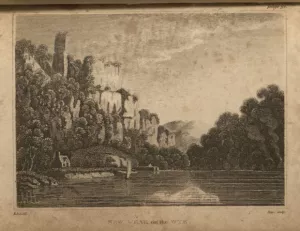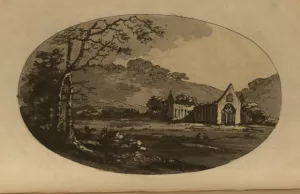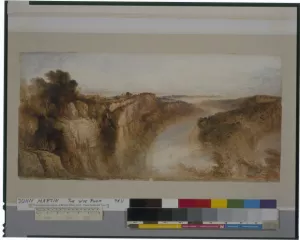“Start hence with us, and trace, with raptur’d eye, / The wild meanderings of the beauteous WYE; / Thy ten days leisure ten days joy shall prove, / And rock and stream breathe amity and love” (see Robert Bloomfield's poem, The Banks of Wye, 1.17-20). It is a June morning, near the turn of the nineteenth century. You are in Ross-on-Wye, England, a steadily growing town near the Welsh border. The bustle of early morning commerce reflects your own restless excitement. On this morning, you will be departing Ross via a pleasure boat that you have hired from a local inn. For three or four guineas (depending on the time of the season and your own ability to bargain), you will be swept south in a serpentine, looping fashion, down the River Wye and past some of the most beautiful scenes the British Isles offer. You will see the iron works at New Weir, Goodrich and Chepstow Castles, the soaring cliffs near Piercefield, and, of course, Tintern Abbey. If it is after 1798 and you have read William Wordsworth’s “Lines composed a few miles above Tintern Abbey, on revisiting the banks of the Wye Valley on a tour, July 13, 1798,” then the journey to come will be more than a procession of pretty pictures. Instead, like the poet, you will use the majestic ruins and lush vegetation to experience nature's impact on the soul, and the picturesque tour will become a voyage of self-discovery, facilitated by the views that can be found only along the banks of the Wye. You hurry into one of ten or so pleasure boats that are docked on the river, tucking yourself beneath the vessel’s built in canopy, and secure a spot next to the drawing table. Excitedly, you open a blank book—your own new travel journal—and set a copy of William Gilpin’s Observations on the River Wye, and Several Parts of South Wales, etc. relative chiefly to Picturesque Beauty; Made in Summer of the Year 1770 on the table as well. The boatmen—two rowers and one oarsman—make sure that your friends and family, who will join you on this remarkable tour, are safely in the boat before announcing that your trip is about to begin.

